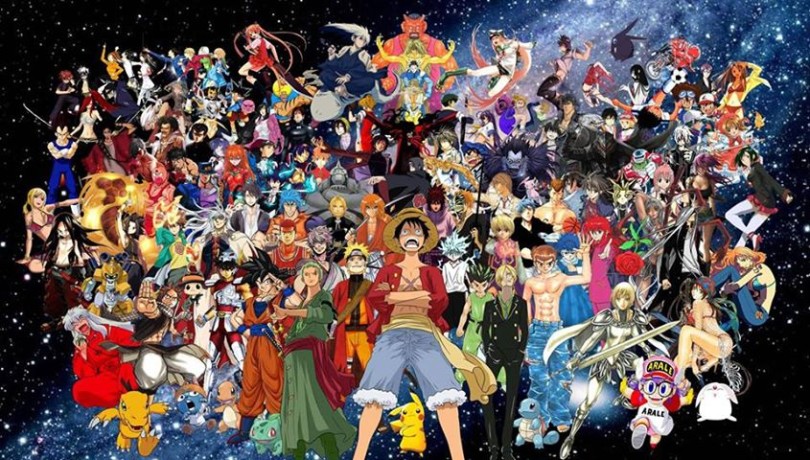For years, within film studies circles it has pretty much been a given that within the context of Japanese cinema, anime fit snugly into its own particular category of identification—that, of course, being genre (if you need further clarification on what constitutes a film genre, the internet is at your disposal). From the standpoint of most international critics, the classification of anime is akin to a work being identified as, say, a comedy or horror (Vick, 78-81). However, while anime is recognizable by its stylistic attributes, it is not solely defined by them (animation from Japan), as is the case with genre. As the initiated are fully aware (both otaku and casual observers alike), within the wide umbrella that is anime, scores if not hundreds of genres and subgenres exist, making the classification of anime as a single genre far too limiting. And, as students of film are aware, the means of production (i.e. the base) as a criterion of this particular form of classification are not only insufficient in such instances, but altogether inappropriate (not to mention misleading to less-informed partakers).
With what, then, does this leave us at our disposal for categorizing anime at large? If it falls under the rooftop of Japanese cinema, but not beneath that of genre, where then does it belong? I would contend that perhaps the term and accompanying concept we are looking for is that of supergenre.
I must first point out that I am by no means the first to coin the term supergenre; the honor, as best as I can tell, goes to film critic and theorist Christian Metz when he first used the term sur-genre in his essay, “The Fiction Film and Its Spectator: A Metaphysical Study” (Manovich, 245). Without delving too far off course, in an attempt to locate a singular, grand common thread between nearly all films of the twentieth century, Metz’ original usage of his term constituted films that told a story (in that sense, his highlighting of the importance placed on narrative in twentieth-century films is quite astute). This concept was later extrapolated and utilized in a different context by film theorist Lev Manovich in his own essay, “Digital Cinema and the History of a Moving Image” where he brilliantly pointed out that unbeknownst to Metz himself—who was writing in the 1970s, long before the advent of digital cinema—the concept could be used in another sense: the vast majority of twentieth-century films are live action, thus constituting their own supergenre (Manovich, 245). Manovich made this observation to stress to his readers the ubiquity of live-action footage in the twentieth century, and its role as the cornerstone of the cinema’s identity (in contrast to the twenty-first, as digital gradually usurps analog). Yet again, this concept will be extrapolated and further delved into here: for if all that is live action legitimately constitutes a supergenre, couldn’t the same be said of its inverse, animation?
Unlike genre, supergenre (if following the concept along the tracks laid down by Manovich) is defined partially by means of production. Its focus is not categorization of individual works based on stylistic aspects, but rather a collective of such works based on common characteristics and shared inclusionary factors for the sole purpose of unification at some higher level. In short, supergenre is not so much one grand genre as it is a housing for the transcendence of genre (the original French, sur-genre, communicates this conceptualization more clearly than the English translation). As such, if Manovich can use supergenre to identify any number of genres based on a specific production element (live action) over that of stylistic or aesthetic ones (setting, camera techniques, lighting, etc.), I believe the same can be done with anime (or, rather, animation as a whole).
By its very nature, my argument thus far is at least pragmatically sound by virtue of its essence (meaning if we accept the premise of labeling in terms of a film’s base, then we must include both sides of the coin—live action and “non-live action” which can only mean animation in some form—or neither). Therefore, if live action is a supergenre, then all that which is animation can also be categorized thus.
But where does anime fit into this postulation? The problems with my argument are (at least) twofold, and both are remnants of twentieth-century film theory: the indexical privilege (as Manovich has coined it) of live-action footage and the (usually Western) cookie-cutter view of anime as a “style.” I will address the latter issue first, as it seems to be more commonly apparent and ongoing into the twenty-first century. For starters, technically speaking, the textbook definition of anime is animation from Japan, not a particular style (even though, of course, it does usually have identifiable features). This is the generalized understanding of it from a ‘gaijin-centric’ (foreign) viewpoint; however, from a purely Japanese standpoint, anime is animation in general (i.e. not solely animation produced in Japan). As societies become more globalized, both of these factoids may lose their legitimacy, regardless of technicalities, by the nature of their ‘proper’ usage gradually falling out of favor. (When was the last time you ever heard someone use “whom” or “healthful”?) It is already becoming apparent in the vernacular of younger generations across the globe—with programs such as Totally Spies (2001–2012), Teen Titans (2003–2006), and the hugely successful Avatar: The Last Airbender series (2005–2008), “anime” as a word has gone from animation in general (Japanese-centric) or animation produced by a particular means in a specific place (non-Japanese view) to a certain look or style, as various archetypes, clichés and nuances found previously only in anime (often adapted originally from manga) are further emulated and international audiences are continuously acclimated. Whether ‘correct’ or not by today’s standards, concepts accompanying words naturally change over time; all I can say for now is that being in the middle of such a change is interesting, and will continue to be as time goes on.
As for the indexical privilege of live-action footage, at the risk of oversimplifying Lev Manovich’s own theory, in short he uses this term to (among other things) make evident the contrast between twentieth and twenty-first century filmmaking. As previously stated, for over a century it was practically taken for granted that films primarily constituted live-action footage. Despite all its artifice, there was—and for some, still is—an air of reality to these films, which is largely absent in digital cinema. As such, part of the hallowed allure of filmmaking was its ability to capture and preserve reality. “Cinema is the art of the index; it is an attempt to make art out of a footprint” (Manovich, 246). Thus, animation during this time was looked down upon as a lesser subset of cinema—that which was ‘unreal’ would naturally be inferior to that which was ‘real.’ Today, however, as Manovich explains, with the possibility of creating onscreen textures, environments, and even people from scratch, and the fact that post-production, linear-editing software treats all of these inputs—‘real’ or not—as equals, live-action footage loses its inherent superiority. It is put best by Manovich himself:
Once live-action footage is digitized […] it loses its privileged indexical relationship to reality. The computer does not distinguish between an image obtained through a photographic lens, an image created in a paint program, or an image synthesized in a 3-D graphics package, since they are all made from the same material—pixels. (249)
If Manovich is right, what does this mean for the relationship between animation and live action? Digital cinema has simultaneously devalued live-action footage (delegating it to stock footage more or less) while returning legitimacy to ‘non-indexical cinema’ (ironically, more akin to cinema’s beginnings in the nineteenth century). Real-life footage and artificially created images are now equal; they’re both ‘fed’ into, captured by, or created from digital data. Where, then, does this leave animation? As a subset of the live-action supergenre? Certainly not, though archaic impressions will likely linger for years to come. If my argument is taken at face value, animated works are entitled to their own genres for classification purposes. Where does this leave anime specifically? It depends on how future patrons and theorists define it. If it relinquishes its original identity in favor of stylistic attributes that would otherwise be more appropriately deemed as ‘anime-esque’ then by all means, it should remain a genre. If it is continued to be used by the Japanese as a term for animation at large, then it is synonymous with my classification as animation (after all, though it can be useful for further identifying a particular work, a title’s country of origin is not a guaranteed criterion for a genre, nor should it always be limited by such defining factors). My guess is it will likely fall somewhere in the middle and never really be concrete for most people, film theorists included; nor will the answer be the same for everyone, varying from person to person, and may in fact end up being divisive for some. From a non-American perspective, or an overarching international one, I suspect the possibilities will be more numerous. As an American, however, I cannot help but suspect in our subconscious minds, ‘American’ will continue to be tantamount to ‘neutral’ or ‘normal’ with everything else falling somewhere within the realm of aberrance. (After all, despite its global popularity, as of this writing Netflix has an entire category labeled as “Foreign Films” which constitutes anything non-American.) American romantic comedies here are simply rom-coms, while the Japanese equivalent is, first and foremost, a Japanese romantic comedy. (Though, to be fair, similar cognitive biases are observable elsewhere when the point of view is shifted: after all, wouldn’t British humor in Britain just be humor?)
The bottom line is that film genre and film theory are adaptable and malleable; they have to be, especially as technology expands ever onward, blurring the lines between media-based entertainment like movies and video games towards an unforeseeable yet unavoidable common endpoint—the goal of which seems to be a dissolution between the barriers separating participants from their artificially constructed realities (complete immersion, a form of Total Cinema as only dreamed about by visionaries such as Andre Bazin…but that is for another discussion). As globalization increases and we ‘outgrow’ cultural divides, perhaps in time the lines separating anime from other forms of animation will fade as well. Perhaps the distinction between live action and animation will dissolve altogether, in ways unfathomable to us now. If genre is one day freed from the confines of national cinema and the classifications of both live action and animation, will it be more liberating or restricting for film critics? What about film producers, writers, and directors, and the viewers who patronize them? It will certainly be interesting to find out.
© 2014
Works Cited
Manovich, Lev. “Digital Cinema and the History of a Moving Image.” The
Film Theory Reader. Ed. Marc Furstenau. Abingdon: Routledge, 2010. 245-254.
Print.
Vick, Tom. Asian Cinema: A Field Guide. New York: HarperCollins, 2007. Print.
Originally posted here.






